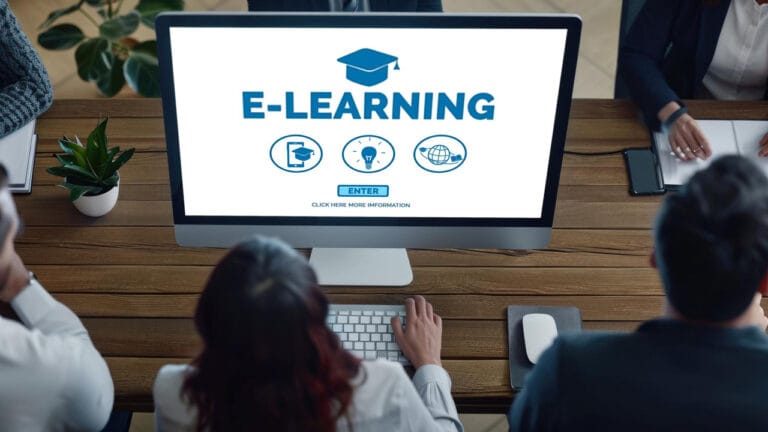Launching a Learning Management System (LMS) is an exciting milestone but ensuring its success requires meticulous project management. You’ve invested time and resources into selecting the perfect LMS, yet without a strategic rollout plan, employee engagement might falter. The key to overcoming this challenge lies in breaking down the implementation process into manageable phases, each with clear milestones and deadlines.
Your LMS rollout isn’t just about technology; it’s also about people. Employees need to understand why this system benefits them and how it integrates into their daily tasks. By assembling a diverse team of IT specialists, project managers, instructional designers, and stakeholders from various departments, you can address both technical integration and user training effectively.
Gathering feedback post-launch is crucial for continuous optimization. This stage involves reviewing analytics to ensure users are signing up identifying common issues and developing a roadmap for future enhancements. With these tips you’ll be well-prepared for a successful LMS rollout.
Understanding LMS Implementation

LMS implementation can be broken down into the following steps:
- Define Clear Goals
- Create Implementation Timeline
- Assemble Implementation Team
- Prepare Data Migration
- Customize Platform
- Conduct Training
- Launch and Monitor
- Foster Engagement
Setting Clear Goals and Objectives

Setting clear goals and objectives is crucial for successful LMS rollouts. Establishing these parameters ensures that all stakeholders are aligned and focused on achieving desired outcomes.
1. Defining Success Criteria
Success criteria must be defined to measure the effectiveness of the LMS deployment. Identify key performance indicators (KPIs) such as user engagement rates, course completion times, or feedback scores. Use these metrics to evaluate whether the system meets your training objectives. Set realistic targets by considering current resources and organizational capabilities.
2. Aligning with Business Needs
Align goals with business needs to ensure relevance and support from leadership. Analyze how the LMS can address specific challenges like skill gaps or compliance requirements within your organization. Collaborate with department heads to tailor content that enhances productivity and aligns with strategic priorities. This alignment facilitates broader acceptance across teams, ensuring sustained utilization of the system.
Building the Implementation Team
A successful Learning Management System (LMS) rollout depends on a well-rounded implementation team. Each member plays a critical role in ensuring smooth execution and achieving project goals.
- Team Leader: Oversees the entire project, serving as the primary point of contact. This person ensures all aspects align with strategic objectives.
- Project Manager: Manages timelines and budgets while coordinating project execution. This role involves monitoring progress and making adjustments as needed.
- eLearning Specialist: Provides expertise on industry standards, learning models, tools, and other vital elements of learning management systems.
- System Administrator: Focuses on system features and configurations. This person handles ongoing tasks related to system maintenance.
- IT Specialists: Establish system setup, ensure compatibility with other programs, and address technical issues that arise during implementation.
- Content Creators: Develop or source educational materials and activities for users to engage with effectively in the new LMS environment.
- HR Leadership: Ensures that the LMS aligns with company goals and facilitates user adoption across the organization.
By carefully selecting individuals for these roles, your team can address both technical challenges and user needs efficiently.
Creating a Detailed Implementation Plan
Developing a detailed implementation plan is crucial for the successful rollout of an LMS. It involves setting clear timelines, preparing for data migration, and ensuring all stakeholders are aligned with the project goals.
1. Developing a Timeline and Milestones
Establishing a timeline with specific milestones enhances project management efficiency. Break down the implementation into phases such as initial setup, customization, testing, and launch. Assign deadlines to each phase to maintain momentum. Include buffer times to accommodate unforeseen delays without impacting the overall schedule. Use tools like Gantt charts for visual tracking of progress.
2. Preparing for Data Migration
Data migration requires careful preparation to ensure seamless transition from old systems. Begin by backing up key data from your existing LMS as a safeguard against potential issues during migration. Address different data formats by mapping them accurately before initiating transfer processes. Focus on migrating essential information including user profiles, course content, and certifications while ensuring compatibility in content standards like SCORM or xAPI between platforms. Collaborate with your vendor’s expertise which often proves beneficial despite any additional costs involved in their services.
Developing and Organizing Content
Creating effective content is crucial for a successful LMS rollout. Focus on developing quality materials that engage users and align with your organization’s learning objectives.
1. High-Quality Content Creation
Prioritize relevance by aligning content with learner needs and organizational goals. Use varied formats like videos, quizzes, and interactive modules to cater to different learning styles. Ensure clarity by using simple language and clear instructions to enhance comprehension. Regularly update materials based on feedback and evolving industry standards to maintain accuracy.
2. Integrating Existing Materials
Incorporate existing resources efficiently to save time and maintain consistency. Evaluate current materials for relevance before integration into the LMS platform. Convert formats as necessary to ensure compatibility with LMS requirements, such as SCORM or xAPI standards, facilitating seamless data tracking. Curate a blend of old and new content for a comprehensive learning experience that leverages past investments while embracing innovation.
Ensuring Seamless Communication and Training

Effective communication and comprehensive training are crucial for a successful LMS rollout. Equip both administrators and users with the necessary skills to navigate the system efficiently.
1. Training for Administrators and Users
Developing structured training programs ensures everyone can effectively use the LMS. Offer diverse formats like workshops, video tutorials, and manuals to cater to different learning preferences. Initiate training sessions before going live with a pilot group to identify potential challenges. This approach helps refine content based on user feedback, enhancing overall program effectiveness.
2. Establishing Feedback Mechanisms
Implement feedback mechanisms to continually assess system performance post-launch. Encourage users to report issues or suggest improvements, facilitating real-time problem-solving. Regularly review this input to make informed adjustments that optimize user experience and maintain system relevance.
Testing and Trial Runs
Testing the LMS in real-world scenarios ensures a smooth rollout. Conducting thorough tests minimizes potential disruptions and enhances user experience.
1. Conducting Pilot Projects
Pilot projects validate system performance before full deployment. Select a diverse group of users to represent different departments or roles within your organization. This approach uncovers specific issues across varied workflows, allowing for targeted adjustments. Monitor participant interactions closely to identify any technical glitches or usability concerns that might arise during broader implementation.
2. Gathering and Analyzing Feedback
Feedback collection from pilot participants is crucial for refining the LMS. Use surveys and interviews to gather detailed insights into user experiences, focusing on both positive aspects and areas needing improvement. Analyze data systematically to pinpoint common patterns or recurring issues, then implement necessary changes based on this feedback. Adopting an iterative process helps ensure the final product meets organizational needs effectively while enhancing overall satisfaction levels among end-users.

Launching the LMS Successfully
Unveiling a new Learning Management System (LMS) within your organization requires careful planning and execution. A strategic approach ensures that employees embrace the system, maximizing its potential benefits.
Strategies for an Effective Rollout
Start by crafting a comprehensive communication plan to generate excitement. Use multiple channels such as emails, announcements, and introductory training sessions to inform employees about the LMS launch. Consider a phased rollout beginning with a pilot group to gather feedback and make necessary adjustments before deploying it companywide.
Make launch day memorable by hosting events or hands-on training sessions. Provide in-person support during these activities, ensuring attendees understand how to use the system effectively. For those who can’t attend live sessions, offer online resources like training PDFs or virtual walkthroughs.
Ensure ongoing support by setting up help desk resources and FAQs for user assistance post-launch. Regular check-ins can address any concerns users may have and improve overall adoption rates.
Monitor performance continuously after implementation by defining key performance indicators (KPIs) aligned with your organization’s learning objectives. This data helps assess the effectiveness of your LMS deployment over time.
Incorporate user feedback into actionable improvements for optimizing experience further down the line—this iterative process guarantees that employee needs are met efficiently while enhancing satisfaction levels within your workforce.
Monitoring and Continuous Improvement
Effective monitoring ensures the LMS remains aligned with organizational goals. Track key performance indicators (KPIs) like user engagement rates, course completion times, and feedback scores. Analyze these metrics regularly to identify trends and address any emerging issues.
Continuous improvement maintains the LMS’s relevance and effectiveness. Gather user feedback through surveys and focus groups to uncover areas for enhancement. Implement changes based on this data to refine learning materials and system functionalities. Regularly update content to reflect industry standards, ensuring it meets learners’ evolving needs.
Engage stakeholders in the improvement process by sharing insights from monitoring activities. Present findings in meetings or reports to highlight successes and pinpoint challenges. Foster a culture of continuous learning within your organization by encouraging open communication about LMS performance.
Leverage analytics tools for deeper insights into user behavior and preferences. Use data visualization techniques to present complex information clearly, aiding decision-making processes related to system improvements or resource allocation.
Consider integrating automated alerts for real-time issue detection if possible. Set up notifications for anomalies like login failures or low participation rates, allowing prompt action before problems escalate further.
By focusing on both monitoring and continuous improvement, you ensure a successful LMS rollout that adapts over time while consistently meeting educational objectives.
Final Thought
Embarking on an LMS project requires strategic planning and a well-organized rollout to maximize its impact within your organization. By focusing on structured implementation, engaging content creation, and robust team collaboration, you can ensure that your new system aligns with business objectives and enhances employee development. Embrace continuous feedback loops to keep improving the platform post-launch and leverage data analytics for informed decision-making. With a phased approach, comprehensive training, and ongoing support, you’re well-equipped to drive success in your LMS rollout journey while fostering a culture of learning and innovation across your workforce.


